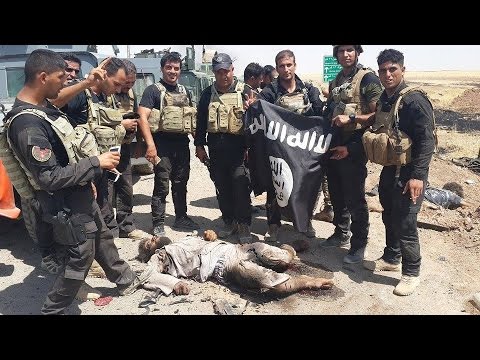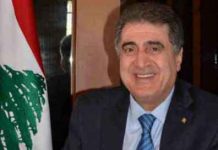Should Iraq’s (Islamic Supreme Council of Iraq) ISCI Forces Really Be Considered ‘Good Militias’?
Phillip Smyth/The Washington Institute/August 18/16
While Washington should continue its efforts to engage Ammar al-Hakim’s militia network, it should also be wary of the umbrella group’s close cooperation with rabidly sectarian, anti-American actors controlled by Iran.
Among the many Shiite militias that compose al-Hashd al-Shabi — the umbrella network of Popular Mobilization Units (PMUs) officially recognized by the Iraqi government — some can be considered “good” in the sense that they are more nationalistic forces who do not engage in jihadist activities and whose ties with Iran are strained or otherwise limited. The Islamic Supreme Council of Iraq (ISCI) and its allied groups have often been categorized as “good Hashd” on the argument that they are better than the multitude of openly Iranian-controlled radical Shiite jihadist units operating within Iraq. Yet for a number of militias falling under the ISCI umbrella, closer analysis indicates that this assumption needs to be reassessed.
EVOLUTION OF ISCI (Islamic Supreme Council of Iraq) )
The organization that would become ISCI was originally formed in the early 1980s by Iraqi Shiite exiles. Established in Iran under Tehran’s tutelage, the group was then known as the Supreme Council for the Islamic Revolution in Iraq (SCIRI). In 1982, it developed a military branch called Faylaq Badr (the Badr Corps).
Following the 2003 coalition invasion and occupation of Iraq, SCIRI members filtered back into the country. Their founder and longtime leader, Muhammad Baqr al-Hakim, was assassinated in August of that year, whereupon his brother Abdulaziz al-Hakim succeeded him. In 2007, the group changed its name to ISCI, in part to distance itself from Iran.
Following Abdulaziz’s death in 2009, his son Ammar al-Hakim took his place and has been leading ISCI ever since. Under his tenure, the group has taken electoral and social positions more in line with influential traditionalist clerics such as Ayatollah Ali al-Sistani. Yet internal fissures emerged as Hakim opposed certain Iranian policies and distanced the group from the ideology of velayat-e faqih, which accords full authority to Iran’s Supreme Leader — a situation exacerbated by Tehran’s support for Iraqi prime minister Nouri al-Maliki. In 2012, these fissures spurred ISCI’s Badr Corps, led by Hadi al-Amiri, to split off and reform themselves as the Badr Organization, a fervently pro-Iranian political and militia group. Afterward, Hakim attempted to remake ISCI into a faction that promotes middle-class Shiite-oriented Iraqi nationalism.
In 2014, when the Islamic State (IS) conquered Mosul and rapidly advanced into other portions of Iraq, ISCI reacted by forming its own militia, Saraya Ashura (Ashura Companies). This force includes a number of former Badr Corps fighters and regularly shows off weapons it has received from Iran. Nevertheless, neither Saraya Ashura nor ISCI has publicly celebrated Tehran’s theocratic leadership or announced support for the Iranian-backed effort to send Shiite jihadists to Syria.
Regarding the Hashd network, Hakim and other ISCI representatives initially offered statements legitimizing the PMUs, but they have since pushed against them. In spring 2015, for example, Hakim argued that Baghdad should cut the salaries of 30,000 PMU fighters. Tensions were further heightened in May of that year, when U.S.-designated terrorist group Kataib Hezbollah, one of Iran’s most loyal proxies, raided ISCI’s Basra headquarters.
IRANIAN PROXIES IN THE ISCI ALLIANCE
Despite Hakim’s tensions with some Iranian proxies, ISCI has maintained deep links with other Iranian-backed groups. When the ISCI-led Muwatin (Citizens) parliamentary bloc was created in 2014, it included nearly twenty different groups, some with close links to Iran.
One such group is Harakat al-Jihad wa al-Bina (Movement for Jihad and Building). Formed in 2011, HJB is a close ally of ISCI with representation in both parliament and the informal umbrella of ISCI militias. Hassan al-Sari, a parliamentarian who serves as the group’s secretary-general, formerly led Harakat Hezbollah fi al-Iraq (Hezbollah Movement in Iraq, or HHI) and was a member of SCIRI’s advisory council. Under his leadership, HHI fought Saddam Hussein’s forces in southern Iraq’s marshlands, and Sari’s family lived in Iran at the time. More recently, he has advocated an armed Iranian presence in Iraq and vociferously opposed U.S. operations against IS.
In 2014, Hakim asked for HJB’s help in recruiting members for a militia, eventually leading to the creation of HJB’s Saraya al-Jihad (Jihad Companies). Yet the group has demonstrated far more willingness to answer such calls from Iranian Supreme Leader Ali Khamenei. Despite Ayatollah Sistani’s messages opposing the deployment of Shiite jihadists to Syria, HJB has sent numerous combatants to that country at Tehran’s behest. This includes Saleh Jabr al-Bukhati, the deputy secretary-general of Saraya al-Jihad who was killed during the June 2016 battle for Fallujah.
Previously, he had fought in Syria and was photographed in Iraq discussing battle plans with Qasem Soleimani, commander of Iran’s Islamic Revolutionary Guard Corps-Qods Force (IRGC-QF).
Some sources have also linked a second HJB militia, Liwa al-Muntazir (Brigade of the Expected One), to Iran. According to a 2007 U.S. diplomatic cable released by WikiLeaks, the militia’s secretary-general — Daghir al-Musawi, a prominent figure in HJB and a former parliamentarian — was likely a brigadier general in the IRGC-QF as well. The cable, which cited U.S. intelligence for some of its claims, also discussed another Musawi-led HJB militia, Harakat Sayyed al-Shuhada (Master of the Martyrs Movement, or HSS): “Members receive salaries and orders from the [IRGC-QF]…[HSS] gathers intelligence, smuggles lethal aid, and conducts limited attacks under Iranian direction.”
In addition, Musawi has been a regular at Iraqi funerals for Shiite jihadists killed in Syria since 2013, and has made numerous appearances with Badr Organization leader Hadi al-Amiri. Liwa al-Muntazir even deployed forces alongside Badr’s during the fall 2014 battle for Jurf al-Sakhar. More recently, Musawi has held a number of public meetings with Abu Mahdi al-Muhandis, a U.S.-designated terrorist and suspected IRGC commander who formerly led Faylaq Badr and was a key figure in the creation of Kataib Hezbollah. Despite these links, Hakim publicly congratulated Musawi in June 2016 for his service during the Fallujah fight.
SECTARIAN HARDLINERS
Another problematic element within the ISCI alliance is the outspoken and at times violent sectarianism exhibited by certain leaders, most prominently Jalal al-Din al-Saghir, who is an imam at Baghdad’s Buratha Mosque, a former member of ISCI’s advisory council, and current secretary-general of the militia Saraya Ansar al-Aqidah (Companies of the Supporters of the Creed). In 2007, Iraqi forces raided his mosque due to accusations that it was a base for Shiite death squads targeting Sunnis. In 2008, he stood firmly against Baghdad’s recognition of the Sunni tribal “awakening” groups that successfully fought IS predecessor al-Qaeda in Iraq. And in 2012, he was at the center of another controversy when he insulted the Iraqi Kurds.
In late 2013, ISCI began to alter its public appearance along more moderate lines, and figures like Saghir were sidelined. Yet he still retained a religious and political leadership advisory role within ISCI and built his own political and militia apparatus. Meanwhile, as Iraqi Shiite jihadists were streaming into Syria, he issued public statements of support for them, even visiting an Iranian hospital in January 2014 to console wounded fighters. And when the creation of Saraya Ansar al-Aqidah was announced around this time, it was described as a group fighting in Syria, not Iraq.
HOW DOES ISCI FIT INTO U.S. POLICY?
As the United States continues to form links with various PMUs, it should take a nuanced and careful approach, recognizing that neither the militias themselves nor their constituent elements should be viewed as a unitary entity. This means being wary in dealing with ISCI and understanding that there are limits to cooperation. Facing external pressures and unable to fully control its many allies, the umbrella group is in the midst of a complicated situation, attempting to play all sides and address numerous, often-competing interests.
At the same time, this means there are opportunities for the United States to leverage ISCI’s positions vis-a-vis Iran and its Iraqi Shiite clients, so efforts to engage the group should continue. The Obama administration deserves credit for praising Hakim’s reformist moves and his attempts to counter the unchecked growth of Iranian-dominated PMUs. Yet ISCI’s close cooperation with and continued incorporation of rabidly sectarian actors and firmly anti-American groups controlled by Iran should not be overlooked.
**Phillip Smyth is a researcher at the University of Maryland, editor of the blog Hizballah Cavalcade, and author of The Washington Institute report The Shiite Jihad in Syria and Its Regional Effects.



















